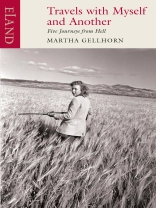Out of a lifetime of travelling, Martha Gellhorn has selected her ‘best horror journeys’. She bumps through rain-sodden, war-torn China to meet Chiang Kai-Shek, floats listlessly in search of u-boats in the wartime Caribbean and visits a dissident writer in the Soviet Union against her better judgment. Written with the eye of a novelist and an ironic black humour, what makes these tales irresistible are Gellhorn's explosive and often surprising reactions. Indignant, but never righteous and not always right, through the crucible of hell on earth emerges a woman who makes you laugh with her at life, while thanking God that you are not with her.
Despre autor
Martha Gellhorn (1908-98) published five novels, fourteen novellas and two collections of short stories. She wanted to be known as a novelist, yet to most people she is remembered as an outstanding war correspondent and for something which infuriated her, her brief marriage to Ernest Hemingway during the Second World War. As a war correspondent she covered almost every major conflict from the Spanish Civil War to the American invasion of Panama in 1989. For a woman it was ground-breaking work, and she took it on with an absolute commitment to the truth. ‘All politicians are bores and liars and fakes. I talk to people’, she said, explaining her paramount interest in war's civilian victims, the unseen casualties. She was one of the great war correspondents, one of the great witnesses, of the twentieth century. Her life as a war correspondent is well illustrated by two incidents. After Hemingway stole her accreditation, she stowed away on a hospital ship on 7 June 1944 and went ashore during the Normandy invasion to help collect wounded men; she was also refused a visa to return to Vietnam by the American military, so infuriated were they by her reports for the Guardian. She was a woman of strong opinions and incredible energy. Though she turned down reporting on the Bosnian war in her 80s, saying she wasn't nimble enough, she flew to Brazil at the age of eighty-seven to research and write an article about the murder of street children. Touch-typing although she could barely see, she was driven by a compassion for the powerless and a curiosity undimmed by age.












